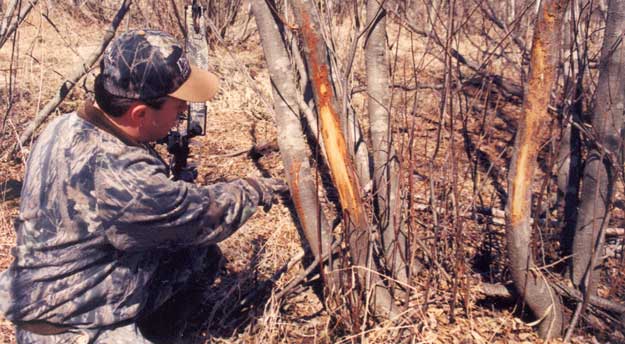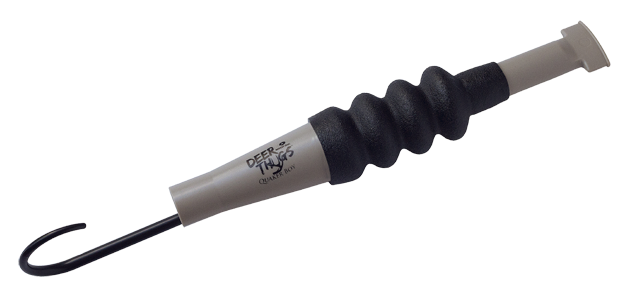
A buck "rub" is one of the best scouting aids a hunter has to learn about their habits. Sure we have trail cameras, but a hunter should still learn to read physical sign like rubs. The rub is made to mark territory - not only visually, but by scent as well. A buck will rub his forehead and/or preorbital gland on the tree. This tells the other deer in the area exactly which buck made the rub. The first visible rubs in an area are usually made by the more mature bucks in the region. Bucks make these types of rubs all the way through the hunting season until a short time before they shed their antlers. Following are keys to understanding rubs better.
When you come across a density of rubs it usually means you've found an area where a buck is spending a good majority of his time. These "secure areas" are valuable spots to find. Whitetails will often have a number of different secure areas and many travel routes to and from them. They choose which bedding site or which route to use depending on where the wind and other factors will give them the best advantage. They also may change secure areas and travel routes depending on time of year, the availability of cover, pressure and food changes during the course of the season.
Different deer have different personalities. Some deer seem to love to rub on trees and others don't do it as often. The number of rubs correlates with the age and breeding status of a buck, as well as the buck to doe ratio in the area. It can also depend on the type or size of the trees in an area. If there aren’t many trees of the right size or type, obviously you won’t see as many rubs.
Direction of travel should be easy to tell. If a buck is traveling north, he's facing the south side of the tree, so the rubs should also be on the south side. Size can be estimated also. You've all heard that big deer rub on big trees and small deer rub on small trees. For the most part that's true. However, big deer will also rub on small trees, but small deer seldom rub on big trees. If the rub is on a small tree - the higher off the ground, typically the bigger the buck - unless the tree was so skinny a smaller buck could have pushed the tree over and worked up the tree that way.
You'll have to determine when and where a buck is going to give you a shot during legal hunting hours. Is he going to dawdle on his way back to his bedding site in the morning? Does he like to get up midday and take a stroll around his perimeter, or can you catch him in the afternoon on the way to your food plots? Scouting will tell you where the buck will be the most vulnerable. For even more information about a "Buck Rub" such as When Do Bucks Start Rubbing? Check out this in-depth article titled Comprehending Whitetail Rubs.
Rubs are one of the best physical scouting aids we have. Sure, nowadays trail camera photos are what most people rely on, but aside from an actual animal sighting you can gather more information from a rub than any other form of physical sign. If you search out rubs in your hunting area, they just might lead you to a buck this season.
This tip is courtesy of the GameKeepers Field Notes, a weekly wildlife and land management email newsletter produced by the Mossy Oak GameKeepers.
A GameKeeper by definition is someone who truly loves AND lives the land, the critters and nature…not just during hunting season but all the time. A GameKeeper wants to be outdoors every day and work the dirt while living their personal “obsession”.
Find out more about what makes a GameKeeper by visiting our website.




























